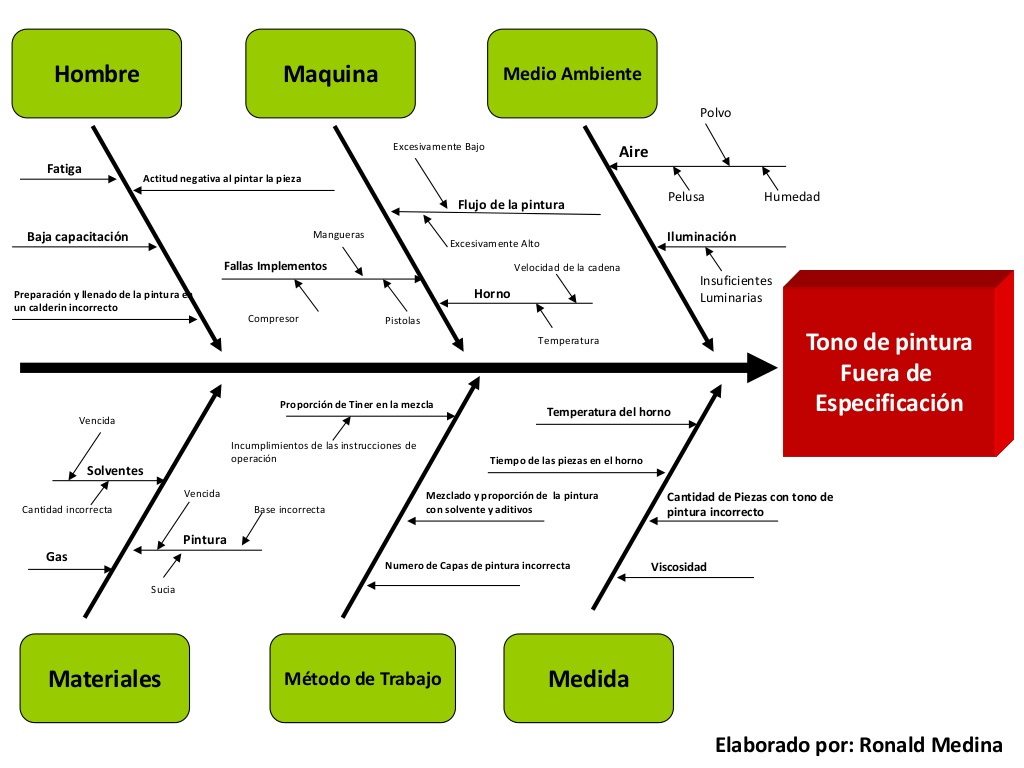Untangling Problems: The Power of the Ishikawa Diagram
Ever feel like you're constantly putting out fires without addressing the underlying issues? Like a hamster on a wheel, always busy but not getting anywhere? If so, you need a tool to help you dig deeper and get to the root of your problems. That's where the Ishikawa Diagram, also known as the fishbone or cause-and-effect diagram, comes in. This powerful visual tool can help you systematically analyze potential causes of a problem, leading to more effective solutions.
The Ishikawa Diagram helps you visually map out all the potential factors contributing to a specific problem. Imagine a fish skeleton: the problem you're trying to solve is the fish's head, and the bones branching out represent the various categories of potential causes. These categories often include things like people, methods, materials, machines, measurements, and environment, but they can be tailored to your specific situation. By brainstorming and visually organizing potential causes within these categories, you can gain a clearer understanding of the complex factors at play.
What is the purpose of an Ishikawa Diagram? Simply put, it helps you find the "why" behind the "what." Instead of just treating symptoms, you're identifying the root causes, which allows you to develop targeted solutions that address the core issues. Think of a leaky faucet: you could keep mopping up the water, but the problem will persist. Using an Ishikawa Diagram helps you identify the source of the leak, allowing you to fix it permanently.
Developed by Kaoru Ishikawa in the 1960s, the Ishikawa Diagram was initially used in quality control in manufacturing. However, its versatility has led to its widespread adoption in various fields, from healthcare to project management. Its simple yet effective approach makes it a valuable tool for anyone looking to understand and solve problems more effectively. The primary challenges related to utilizing Ishikawa Diagrams effectively often involve ensuring comprehensive brainstorming and avoiding biases during the cause identification process.
Let's say you're experiencing high customer churn. Instead of just guessing at the reasons, you can use an Ishikawa Diagram to systematically explore potential causes. Under the category "People," you might list factors like inadequate customer service training or poor communication. Under "Methods," you might consider ineffective marketing strategies or cumbersome signup processes. By visualizing these potential causes, you can begin to see patterns and prioritize areas for improvement.
One of the primary benefits of using an Ishikawa Diagram is its ability to facilitate collaborative problem-solving. Gathering a team of diverse perspectives can enrich the brainstorming process and lead to more comprehensive insights. Another benefit is its visual nature. The diagram makes it easy to see the relationships between different potential causes and the overall problem, making complex issues easier to grasp. Finally, it promotes a more structured and systematic approach to problem-solving, moving beyond guesswork to a more data-driven approach.
Creating an Ishikawa Diagram is a straightforward process. First, define the problem clearly. Then, identify the main categories of potential causes. Next, brainstorm potential causes within each category. Finally, analyze the diagram to identify the most likely root causes. A successful example might involve a team using the diagram to identify the root cause of delays in a project, leading to the implementation of new project management practices.
Advantages and Disadvantages of Ishikawa Diagrams
| Advantages | Disadvantages |
|---|---|
| Facilitates brainstorming and collaboration | Can become overly complex with too many factors |
| Visually represents complex problems | May not identify all potential causes |
| Promotes systematic problem-solving | Requires effective facilitation to avoid biases |
Best practices for implementing Ishikawa Diagrams include clearly defining the problem, involving a diverse team, encouraging open brainstorming, using data to support claims, and focusing on actionable solutions.
Real-world examples include using Ishikawa Diagrams to address issues such as high employee turnover, declining product quality, or increasing customer complaints.
Frequently asked questions about Ishikawa Diagrams include what categories to use, how to facilitate a brainstorming session, and how to analyze the diagram to identify root causes.
Tips and tricks for using Ishikawa Diagrams effectively include starting with a clear problem statement, using different colored markers to represent different categories, and focusing on the most impactful potential causes.
In conclusion, the Ishikawa Diagram is a valuable tool for anyone seeking to understand and solve problems more effectively. By visually mapping out potential causes, it facilitates collaborative brainstorming, promotes systematic analysis, and ultimately leads to more targeted solutions. Whether you're tackling a complex business challenge or a personal issue, the Ishikawa Diagram can help you untangle the root causes and pave the way for lasting improvement. Take the time to learn and apply this simple yet powerful technique, and you'll be well-equipped to address the challenges you face, both big and small. Start using Ishikawa Diagrams today and experience the difference it can make in your problem-solving approach. It's a simple tool with the potential to unlock significant improvements in any area of your life.

DIAGRAMA DE ISHIKAWA Blog Lean THiNK PRODUCTIVITY | Kennecott Land

Pra que serve o Diagrama Ishikawa Espinha de peixe | Kennecott Land

Diagrama De Ishikawa Medida | Kennecott Land

O que é Diagrama de Ishikawa como funciona e para que serve | Kennecott Land

Total 37 imagen modelo de kaoru ishikawa | Kennecott Land

Como Aplicar O Diagrama De Ishikawa Para Resolver Problemas | Kennecott Land

Diagrama De Covid Ishikawa | Kennecott Land

para que serve o diagrama de ishikawa | Kennecott Land

Diagrama De Ishikawa Plantilla Excel | Kennecott Land

Diagrama De Ishikawa Power Ppt | Kennecott Land

Como O Diagrama De Ishikawa Contribui Com A Gestão Da Empresa | Kennecott Land

Diagrama De Ishikawa Ejemplo | Kennecott Land

O Grafico De Ishikawa Tambem Conhecido Como Diagrama | Kennecott Land

Diagrama de Ishikawa veja o que é como fazer e exemplo | Kennecott Land

Introduzir 77 imagem modelo de ishikawa | Kennecott Land